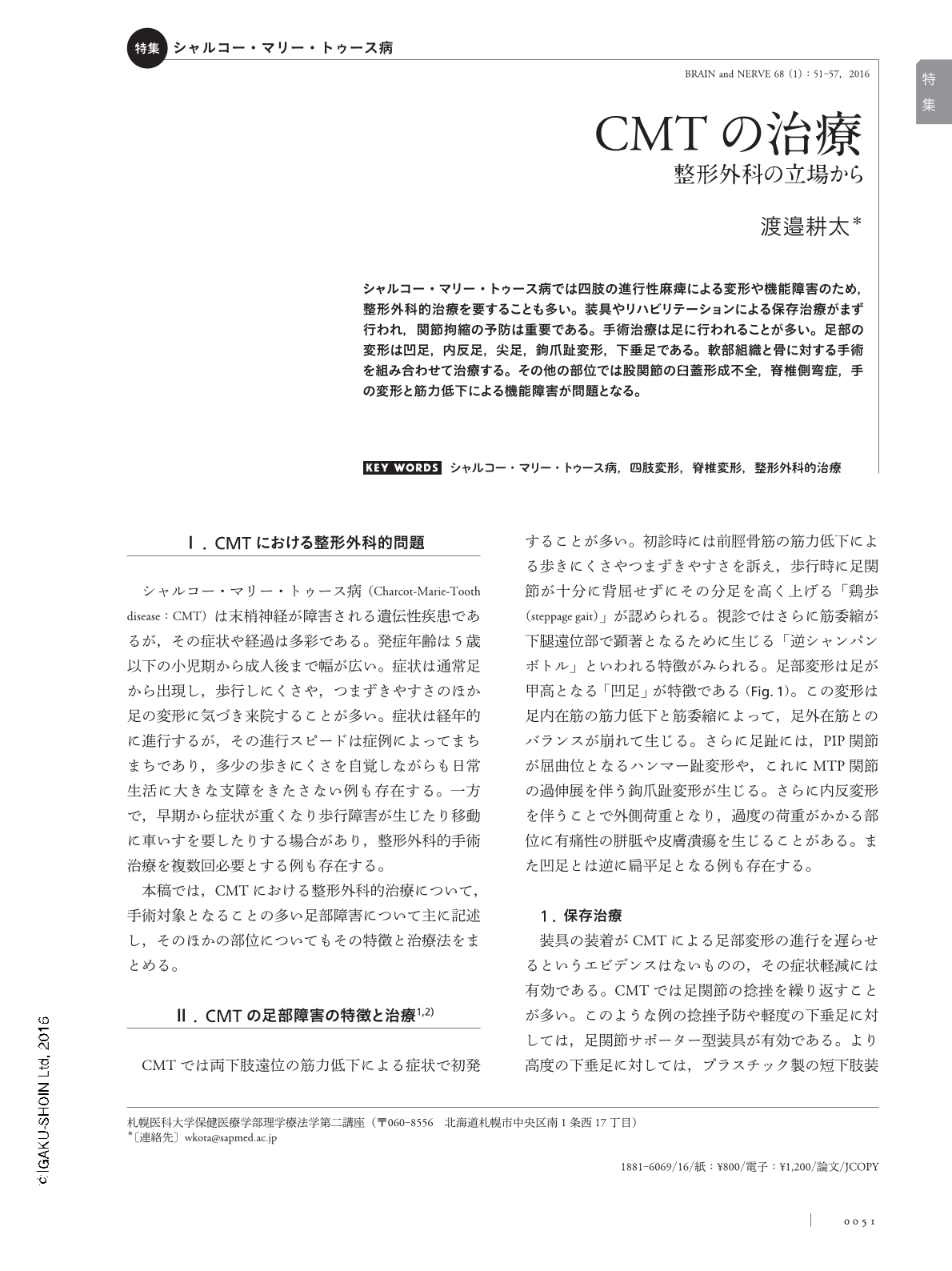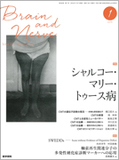Japanese
English
- 有料閲覧
- Abstract 文献概要
- 1ページ目 Look Inside
- 参考文献 Reference
シャルコー・マリー・トゥース病では四肢の進行性麻痺による変形や機能障害のため,整形外科的治療を要することも多い。装具やリハビリテーションによる保存治療がまず行われ,関節拘縮の予防は重要である。手術治療は足に行われることが多い。足部の変形は凹足,内反足,尖足,鉤爪趾変形,下垂足である。軟部組織と骨に対する手術を組み合わせて治療する。その他の部位では股関節の臼蓋形成不全,脊椎側弯症,手の変形と筋力低下による機能障害が問題となる。
Abstract
The orthopedic manifestations in patients with Charcot-Marie-Tooth disease include deformity and dysfunction of the extremities and spine. Conservative treatment is the first choice. Orthosis and rehabilitation can improve function, and are important for the prevention of joint contractures. Foot problems are most commonly observed and require surgical treatment. Foot deformities include pes cavus, cavovarus, claw toes, or drop foot. Single or combined surgeries selected for soft tissues are plantar release, tendon transfer, or Achilles tendon lengthening, and those for bones are osteotomies and joint fusions. The upper limb initially demonstrates loss of power of the intrinsic hand muscles followed by symmetrical atrophy of the forearm muscle groups. The typical hand deformity is claw hand. Tendon transfer, joint fusion, soft tissue release, or nerve decompression procedures are performed for correction of hand deformities. Acetabular dysplasia in the hip joints is sometimes observed and osteotomy is selected as surgical treatment in such cases. The associated spinal deformity is scoliosis with or without kyphosis. Similar to treatment of idiopathic scoliosis, posterior spinal fusion is performed in patients with progressive spinal deformities.

Copyright © 2016, Igaku-Shoin Ltd. All rights reserved.


